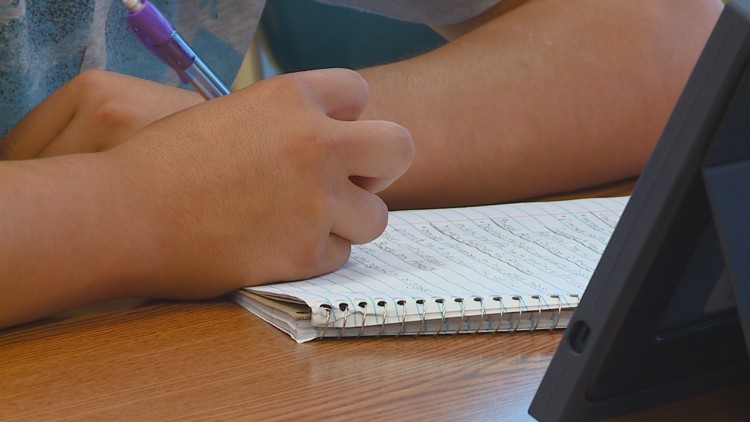SAN DIEGO COUNTY, Calif. — An education task force released a report Monday highlighting the urgency for every San Diego County student to have equitable access to learning during the COVID-19 pandemic.
For distance learning to be equitable, teachers must have training, parents and caregivers must have resources and students have supportive learning environments, according to the Equitable Distance Learning Taskforce -- a countywide group of school districts, education experts, nonprofit organizations and community leaders.
The report says that technological devices and sufficient connectivity are a necessary educational investment, but not enough to promote equity in learning.
"We all have a responsibility and role to play in supporting San Diego's children, youth and families," said Erin Hogeboom, director of San Diego for Every Child -- a nonprofit dedicated to cutting child poverty in San Diego County by 50% by 2030.
"COVID-19 has disproportionately hit and affected our community, and getting equitable distance learning right impacts everything from a child's educational experience to the well-being of San Diego's future economy," she said. "This problem is big enough for all of us to be part of the solution."
The collaborative task force is co-chaired by the Classroom of the Future Foundation and San Diego for Every Child, in conjunction with the San Diego County Office of Education.
The report builds on findings earlier this year from the Classroom of the Future Foundation -- a local nonprofit which seeks to expand innovative learning environments in San Diego County schools -- which determined that around 100,000 PreK-12 students in San Diego County lack access to the internet at home or are under-connected.
The "Beyond the Hotspot: Supporting Equitable Distance Learning in San Diego County" report looks at the geographic impacts of economic and poverty indicators in conjunction with data on Internet and technological access. The task force is now working to connect donors to community-based experts already working to meet distance learning needs across the county.
Due to distance learning since the spring, the average student is likely behind seven months academically, according to the report. Because of additional infrastructure disparities, the figure may be as high as 10 months for Black children and nine months for Latinx children.
In San Diego County, about 100,000 students do not have basic access to the Internet, with in-home broadband the most unlikely in the southern and northeastern parts of the county. According to research done by the Parent Institute for Quality Education, a survey of 661 parents found that a quarter of them did not have an email address.
The task force is seeking to spread the message that if students will be primarily engaged in distance learning during the 2020-21 school year, parents and education officials must be focused on an equitable distribution of resources, which means intentionally focusing on areas which have been disproportionately impacted.
Education task force releases report highlighting COVID-19 inequities in school
The report says that technological devices and sufficient connectivity are a necessary educational investment, but not enough to promote equity in learning.



